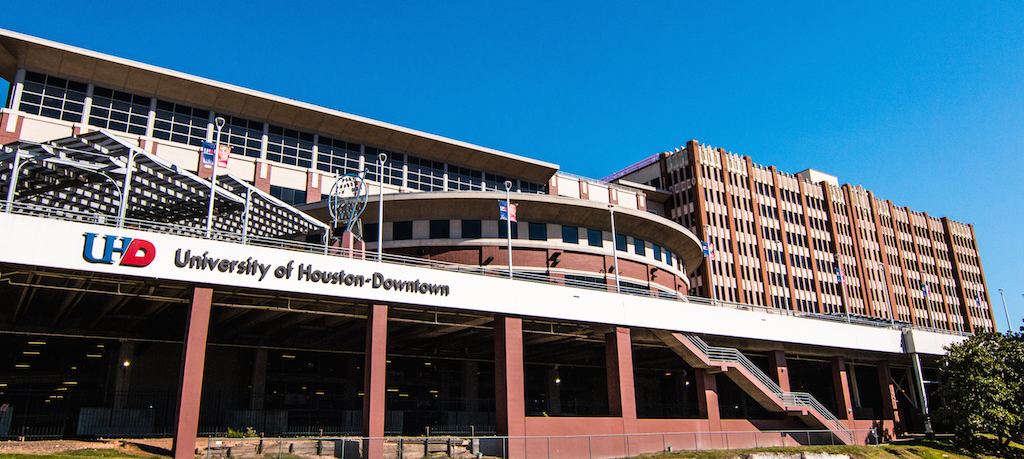University of Houston Downtown Campus Building
Project Description:
A new polymer-based terrazzo was installed on the 9th floor of the building as part of a remediation project at the school. Not long after the installation was complete, blisters in the new terrazzo began to appear. Paradigm was called to assit in determining the cause of the blisters and appropriate remedial measure.
Terrazzo was widely used in the building. However, the original terrazzo was a cement-based terrazzo where small chips of stone, typically limestone, are set in a cement-based binder and then ground to produce the typical smooth, level, attractive floor covering. Polymer-based terrazzo or thin-set terrazzo is based on a polyester or vinyl ester binder. The big difference in this application was that the cement-based terrazzo is relatively permeable to moisture, the polymer-based terrazzo is not.
Part of the basis for the floor repairs were the need to repair damage and cracking to the existing floor. The floor contractor use a cement-based leveling material beneath the new terrazzo. Because the cement-based leveling material contained water to provide workability to the material and hydrate the cement, drying time was required to allow all of the excess water in the underlayment to evoporate.
Problems began as portions of the new terrazzo began developing blisters and cracking. When the terrazzo was removed, dampness was clearly evident on the underside of the removed pieces and the remaining substrate.
A review of the history of the installation process of the new terrazzo led quickly to the conclusion that the time allowed for the drying of the underlayment was insufficient and as moisture in the underlayment vaporized, the permeability of the new polymer-based terrazzo was far too low to allow the water vapor to pass through. As vapor pressure increased at the interface of the underlayment and new terrazzo, the bond between the new terrazzo and underlayment was broken and with increasing pressure and decreasing restraint, the new terrazzo developed blisters and cracks. Remediation required removal of the new terrazzo and adequate drying before new ploymer terrazzo could be installed.
Client:
University of Houston – Downtown
Kimberly Morisak




